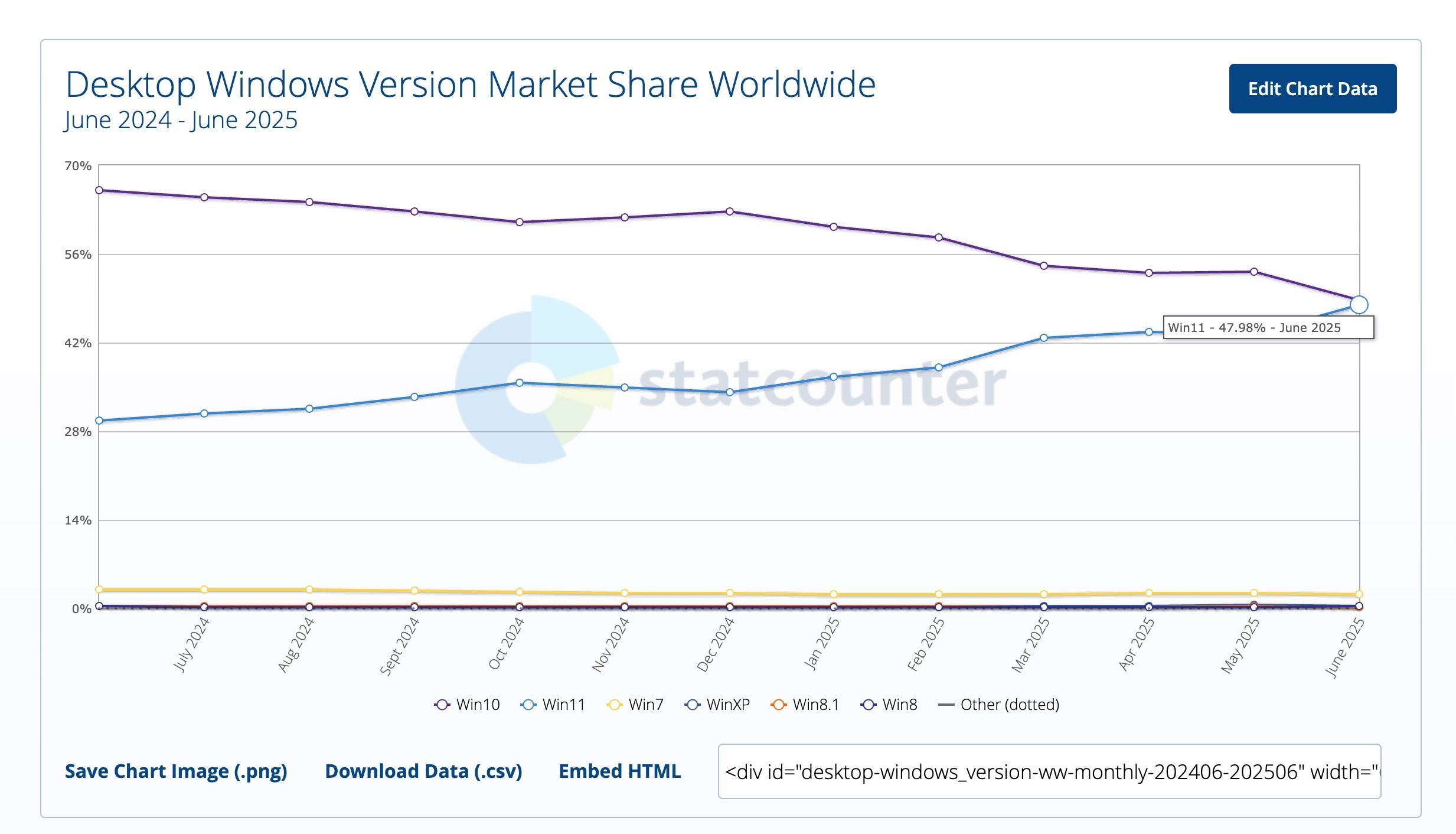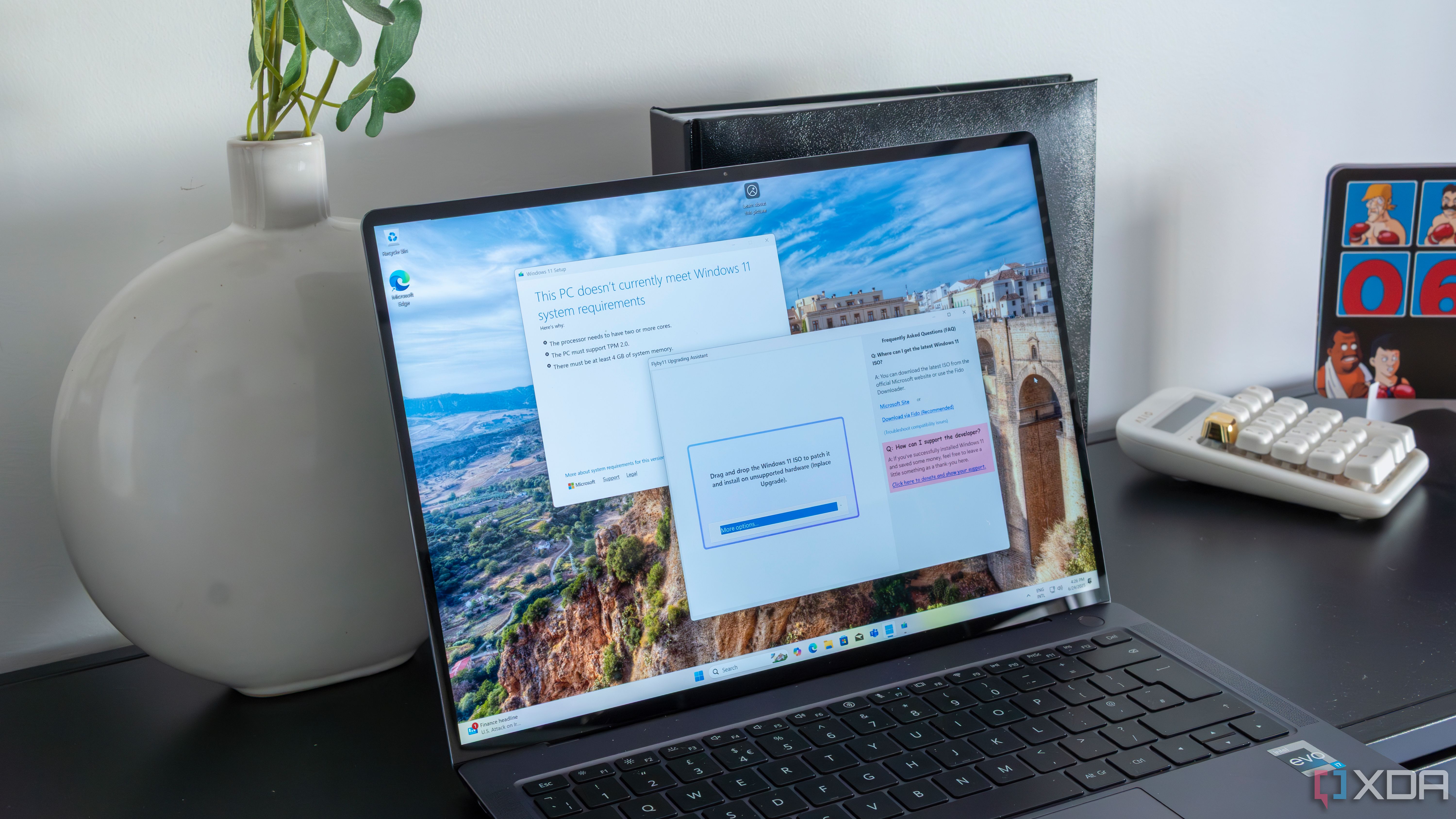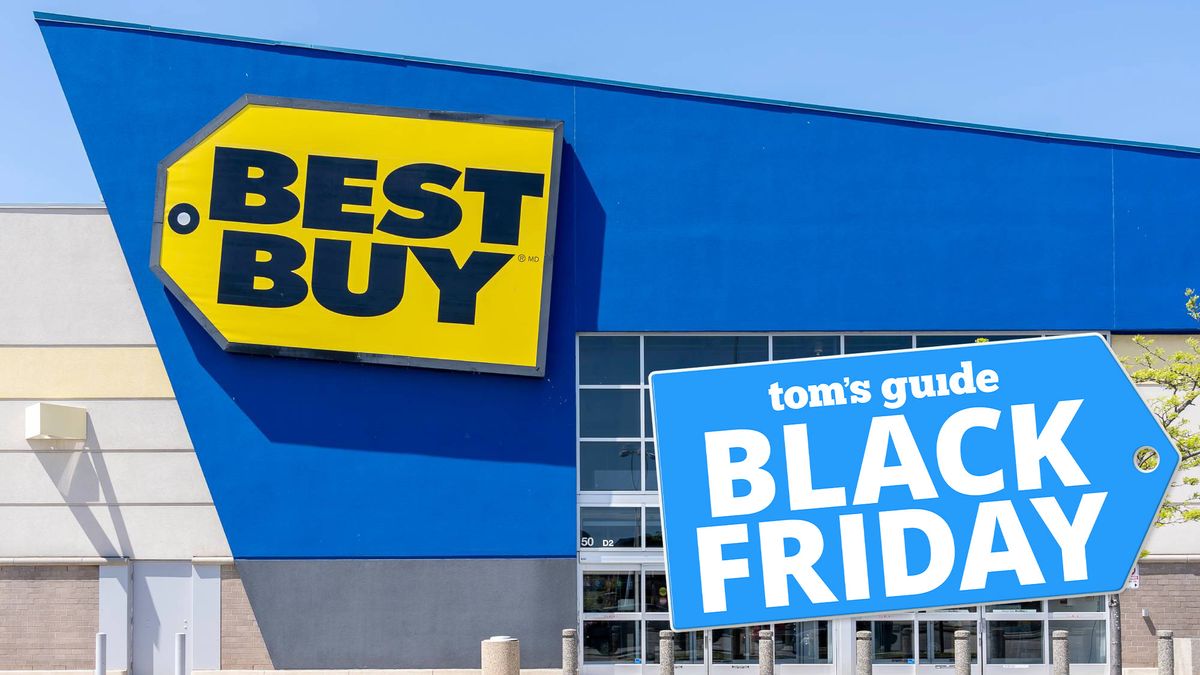Summary
- Windows 11 lacks some essential Windows 10 features, like moving the taskbar.
- Windows 10 users must switch to Windows 11 or enroll in a paid/free ESU program by 2025.
- Windows 11 has surpassed Windows 10's market share in various countries, signaling a shift in user preference.
It's been almost four years since Microsoft released Windows 11, and while the operating system feels more modern than its predecessor, it's still missing some of the key Windows 10 features, such as the ability to move the taskbar. For many users, those missing features are a dealbreaker and one of the factors that keep them on Windows 10.
However, those who care about security updates and are still using Windows 10 need to either switch to Windows 11 or enroll their PC in the Extended Security Updates (ESU) program. This is because Microsoft will no longer offer security updates from October 15, 2025. The ESU program costs $30 for a security update extension for one year, but you can also enroll for free without hassle. While free ways to stay on Windows 10 sound great on paper for those who want to continue using the OS, it looks like more people are now making up their minds to switch to Windows 11.
In countries like the United States, Canada, and the UK, Windows 11 has long surpassed the market share of Windows 10, according to StatCounter data. However, the market share for different versions of Windows is a little different worldwide. According to StatCounter's worldwide data, Windows 11, with a 47.98% market share, is still behind Windows 10, which is now at 48.76%.

This is the closest Windows 11 has ever come to matching Windows 10. The good news for Microsoft is that the surge in Windows 11's market share is coming from the decline of Windows 10. The market share for both versions of Windows remained almost flat from March to May this year. But things have turned for the better for Microsoft, as Windows 11 saw a spike of more than four percentage points in adoption in June, while Windows 10 declined by almost the same percentage points, if StatCounter is to be believed.
After Windows 11, the third most used version of Windows isn't Windows 8 or 8.1. With a 2.19% share, more-than-15-year-old Windows 7 is the third-most used version of Windows, as per StatCounter's June data worldwide. Next is Windows XP with a 0.43% market share, while Windows 8 and 8.1 have a 0.31% and 0.28% market share, respectively.
However, it is worth remembering that StatCounter collects data from websites that use its tracking code. According to the company's official website, its tracking code is installed on more than 1.5 billion sites globally. So, its monthly data can't paint the full picture of how many PCs are running Windows. While it shows the trend in OS usage, take it with a pinch of salt.
.png)












 English (US) ·
English (US) ·